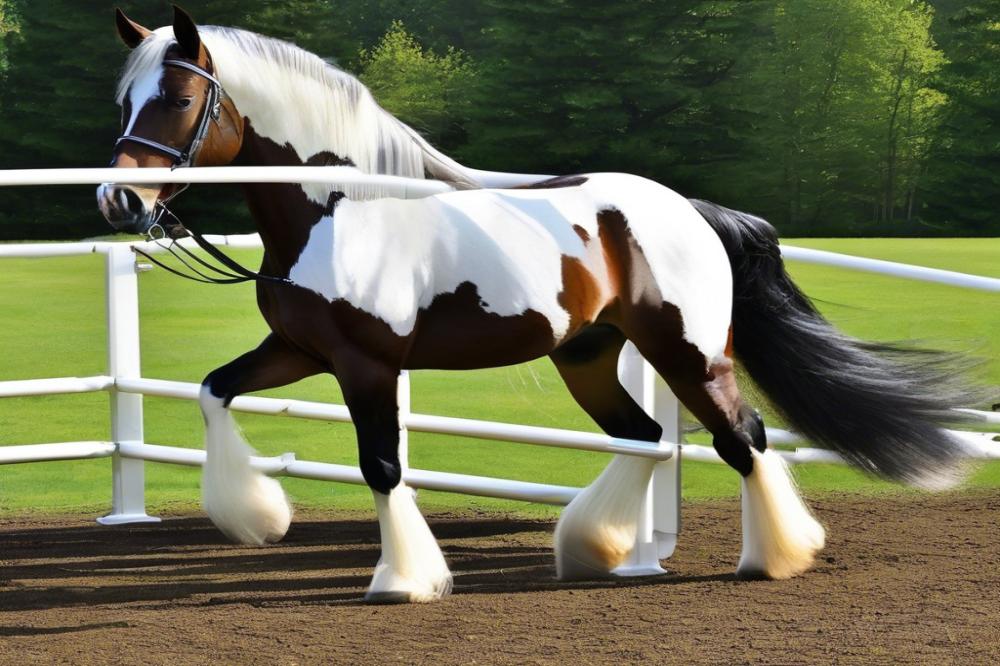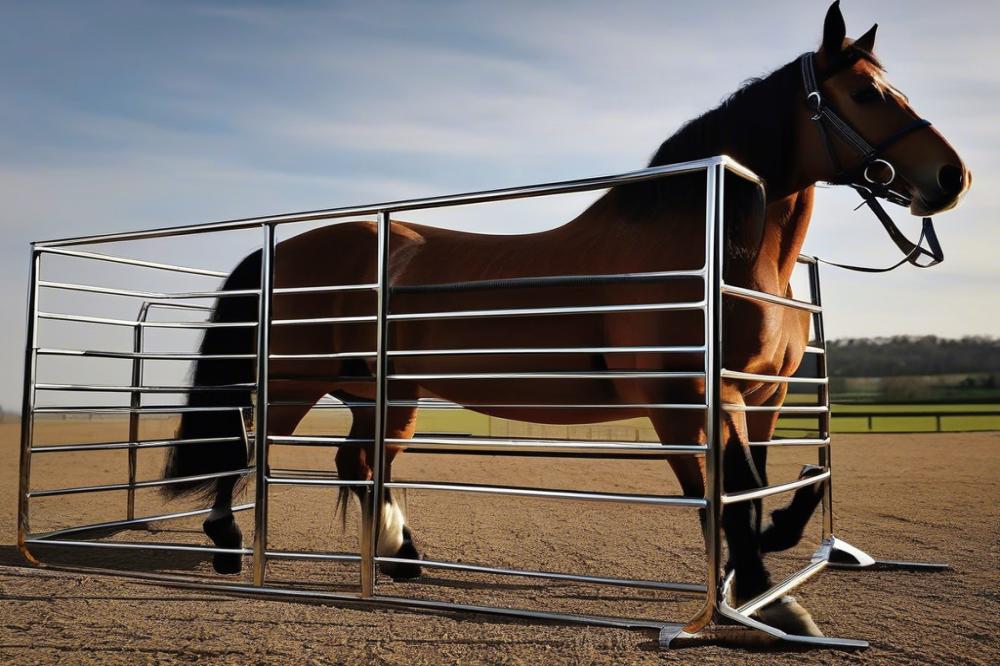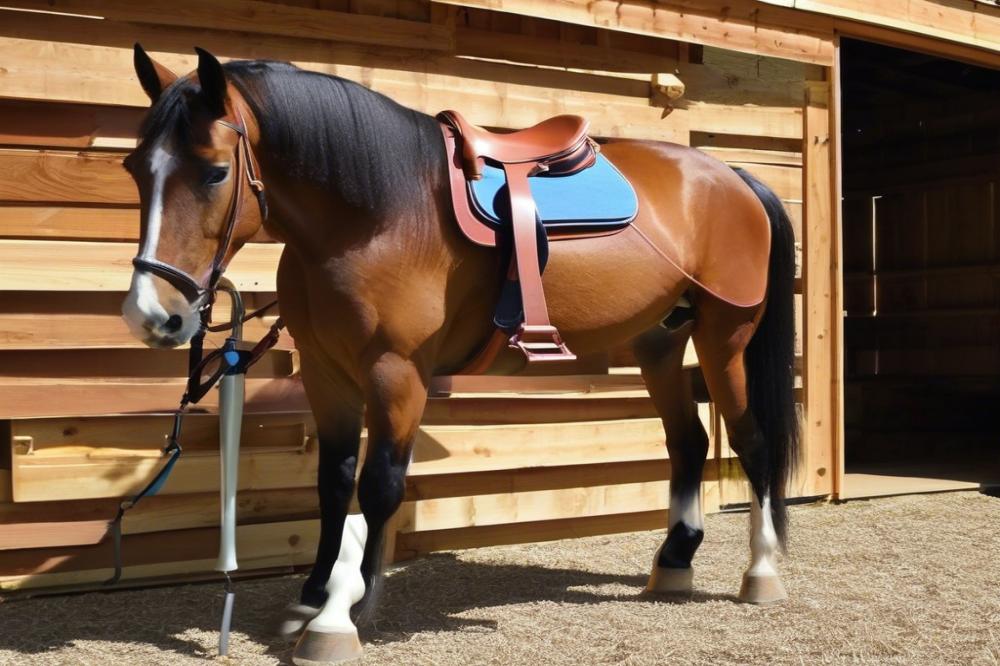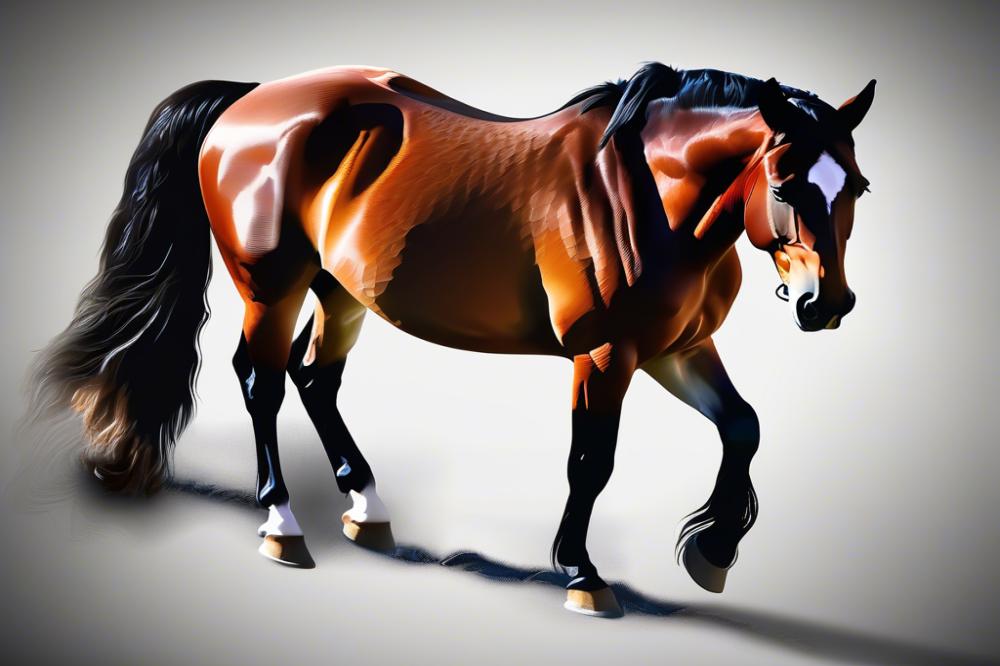Getting Started: The DIY Horse Walker
When it comes to caring for our equine friends, finding innovative solutions can make all the difference. A DIY horse walker is more than just a fun project; it’s a practical addition to your horse exercise equipment. Building your own horse walker can help in many ways, including promoting horse training and keeping your furry companion fit and healthy. This handy tool allows your horse to move without the constant need for a human caretaker, making it a win-win for both owner and horse!
Think of it this way: just like humans need a good workout to stay healthy, horses require their own version of exercise. With proper movement, horses can maintain their muscle tone, agility, and even their mental health. Lack of activity can sometimes lead to problems like boredom or even bad behaviors, right? No one wants a biting horse on their hands! Plus, letting your horse wander freely in a controlled environment might lead to a more relaxed animal, reducing stress levels all around.
Let’s not forget about the financial part. Buying a ready-made horse walker can put a serious dent in your wallet. Constructing your own can save quite a bit of cash, allowing you to invest in other important equine projects. It’s like finding a treasure at the end of a rainbow! Once you grasp the basics of horse walker construction, you can tailor the design to suit your space and the needs of your horse. You could even customize it for specific activities or types of horses, like those that excel as the best horse breed for polo.
Embracing a DIY approach isn’t merely about saving money. It’s also about having the freedom to modify your creation as your horse’s needs change. Maybe your horse prefers a little more speed, or perhaps they’d like a gentler pace. Whatever the case, having your own walker allows for adjustments on a whim. So, gather your tools and get ready to transform your horse care routine!
Understanding Horse Walkers

Definition and Purpose of Horse Walkers
Horse walkers are clever pieces of equine equipment designed to keep your horse moving while saving your energy. Think of them as a treadmill for horses but outside in the fresh air. These machines offer a practical solution for horse care, allowing your equine friend to exercise without needing a rider. They are primarily used to enhance fitness, improve conditioning, or even assist in rehabilitation. Just imagine your horse happily striding along while you sip your coffee. Sounds nice, right?
Types of Horse Walkers Available
Several types of horse walkers are at your disposal. You can find the round pen style, which allows horses to walk in a circular path. Then there are straight-line walkers for a more linear stroll. Mechanical walkers come in many designs, some are powered and move the horse at a set pace. For those who enjoy a personal touch, DIY horse walker construction projects can be both rewarding and fun. You can customize the size and style to fit your specific needs. With so many options, it’s essential to consider your horse’s habits and your available space.
Benefits of Using a Horse Walker for Training and Rehabilitation
Utilizing a horse walker can provide numerous advantages when it comes to training and rehab. Regular movement is crucial for keeping your horse fit, and these devices help promote exercise without excessive strain. For horses recovering from injury, professionally designed walkers ensure controlled activity. You wouldn’t send your friend to the gym after an injury right away, would you? The same goes for our four-legged companions.
In addition, horse exercise equipment like walkers fosters mental stimulation. Horses are intelligent beings that can easily become bored. The simple act of walking can keep their minds engaged, which is just as important as physical health. You’d definitely want to entertain a bored horse! When used correctly, these walkers can lead to a happier horse, making training more enjoyable for both the rider and the horse.
When everything is factored in, a horse walker can be a fantastic addition to your range of equine projects. The benefits stretch beyond just exercise; they can enrich your horse’s overall well-being. So why not check out the possibilities?
Planning Your DIY Horse Walker

Assessing Space and Location Requirements
Finding the right spot for your horse walker is key. Think about how much room you have before jumping in. Ideally, pick a flat area, away from fences, bushes, or anything that could distract your horse. Safety first! Keep in mind that this piece of equine equipment needs enough space for your horse to move comfortably. Take a measuring tape and mark out your design in the grass. This will help you visualize the ultimate space needed for the horse walker construction. Remember, a calm horse is a happy horse!
Choosing the Right Design for Your Needs
Different designs serve different purposes. Do you want a circular walker or something more rectangular? Circular walkways often help horses feel more relaxed during exercise. If you have multiple horses, consider a design that allows for several at once. Think about the age and temperament of your horse. A gentle giant may do well in a spacious design, while a more energetic young one might thrive in a quicker setup. Finding the right plan can make all the difference in horse care and horse training.
Gathering Necessary Materials and Tools
Before you start hammering away, gather your materials. You’ll need wood, metal posts, and maybe some ropes or panels to create the actual walkway. A few sturdy boards can help create a safe structure. Don’t forget tools, either. A hammer, nails, and a saw are must-haves for any equine project. If you’re unsure, your local hardware store staff can guide you. It’s good to have a checklist so you don’t find yourself staring at a blank space, wishing you had picked up that bag of nails. After all, nobody wants a DIY horse walker that’s half-finished!
Step-by-Step Guide to Building a DIY Horse Walker

Creating a horse walker can be a rewarding project. It can also be a breeze if you follow the right steps. Here’s your roadmap to constructing a simple version. Gather your materials before you start. You’ll need wood, some sturdy cables, and a few basic tools. The right equine equipment will help make the job easier.
Building Instructions
First, sketch out a plan. Decide where it will be and how large you want it to be. Then, cut your wood into the necessary lengths for the frame. Drill holes in the appropriate spots to add the cables later. Keep everything level while you’re working. Place the supports evenly; this will give stability.
Next, assemble the frame. Make sure all joints are secure. You can use brackets or screws for added strength. If you’re feeling fancy, use wood glue, too. When you get to the center post, ensure it’s robust enough to bear weight. Think about this as the backbone of your horse exercise equipment.
Safety Considerations During the Build
While building, safety should always be your top priority. Wear gloves to avoid splinters. A face mask can help prevent dust inhalation when cutting. It’s wise to keep tools out of reach of any curious horses. If you are unsure how to operate a tool, don’t hesitate to ask for help.
Only use pressure-treated wood for parts exposed to moisture. This helps prevent rotting and extending the life of your project. When using cables, check for fraying or damage. Safety gear like a hard hat isn’t a bad idea if you’re working with heavy materials. You wouldn’t want a rogue board ruining your day!
Tips for Ensuring Structural Integrity and Function
To make the horse walker last, always double-check your connections. Strong connections equal a sturdy construction. You don’t want it wobbling or squeaking when in use. Running a test with some weight can indicate if it’s working well. Attach a few weights or gently lead a horse inside to check for stability.
Consider incorporating a covering. This helps protect your equine friends from sun or rain. It could also keep them calm when they’re exercising. Your horse training efforts will benefit from a peaceful environment. Finally, maintain the horse walker regularly. Checking for wear and tear will help keep your equine projects on track!
Setting Up Your Horse Walker
Placing and Securing the Horse Walker
Choosing the right spot for your horse walker is key. Look for a level area, away from fences or trees. A flat surface helps keep the equipment stable. Make sure your chosen location has enough space for your horse to move freely. You don’t want any cramped quarters, or your equine friend might get a bit unhappy.
After finding a suitable place, you’ll need to secure the walker. Use sturdy anchors to keep everything in place. Nobody wants a surprise when their horse takes off running! Check each part before you set your horse loose inside. Remember, safety is a top priority when dealing with equine equipment.
Installing Safety Features and Adjustments
Next, it’s time to add those all-important safety features. Horse training demands a cautious approach, so don’t skip this step! Install guards around the edges to keep curious hooves safe. You might consider adding slow-motion stops to avoid any nasty surprises. These will help manage the speed of the walker, providing comfort to your horse.
After that, make adjustments to the harness and leads. They should fit your horse snugly but not too tight. If it’s too loose, your horse could slip out. Too tight? Well, that could lead to some pretty uncomfortable moments. Take your time to get this right.
Preparing the Walker for Initial Use
Before letting your horse step in, do a thorough inspection. Give everything a once-over to check for loose bolts or sharp edges. A little patience can save a lot of trouble later on! If you find anything odd, fix it before putting your horse inside.
Once you’re confident everything is in order, it’s time for action. Encourage your horse to explore the walker. You can start by walking alongside to build trust. The first time might be a bit too cautious. Don’t worry! Take it slow. The more comfortable your horse feels, the better the experience will be.
As you get started, adjust the time to ensure your horse’s comfort. Just like us, they have their limits. Gradually increase the duration of use based on their response. With all the right preparations, this DIY horse walker can become a valuable part of your horse care routine.
Training Your Horse to Use the Walker
Introduction Techniques for Your Horse
Getting your horse familiar with the walker can be quite the adventure. Start by introducing the horse walker construction as a simple, safe space. Approach your horse calmly, allowing them to sniff around and inspect the area. Rushing this process can make them anxious. It’s like meeting a new friend—first impressions matter!
Next, encourage your horse to enter the walker using treats or their favorite snack. Positive reinforcement works wonders in horse training. Toss a few tasty treats inside, and be ready for some eager munching! Just like children, horses love a bit of encouragement.
Establishing a Routine and Schedule
You want your horse to feel at ease and aware that this is part of their daily routine. Consistency is key. Set a specific time each day for using the horse walker. Think of it as their special time to strut their stuff. Try to keep the sessions short at first. This will help the horse adapt without becoming overwhelmed.
Over time, increase the duration of the sessions. Allow your horse to gradually build stamina. Remember, this isn’t a race; it’s a gentle stroll to fitness.
Truly consider the environment during sessions as well. Make sure the area remains calm and quiet. Sudden noises can startle your horse, which may cause stress. So keep those disco parties away during training!
Monitoring Your Horse’s Behavior and Comfort
Watching your horse during these sessions is vital. Look for signs of discomfort or anxiety. Is your horse pawing at the ground or acting restless? If your trusty steed is uncomfortable, it’s crucial to pause and reassess. Sometimes, little adjustments can make a big difference.
Also, keep an eye out for fatigue. Just like us, horses can tire out. They need breaks, just like a break from homework on a sunny day. After a solid training session, provide some fresh water and a treat. This sets a positive tone.
Remember, patience is your best friend here. Each horse is unique, with their own set of likes and dislikes. It takes time for them to get used to this type of horse exercise equipment. In the end, your attention to detail in horse care can lead to a happy, healthy horse that looks forward to their walker time!
Maintenance and Upkeep of Your DIY Horse Walker
Regular Maintenance Tasks to Ensure Safety
Keeping your horse walker safe is just as important as building it. Regular maintenance helps you spot problems before they become serious. Check all moving parts regularly. Lubricate hinges and wheels to prevent squeaks and rust. Tighten bolts and screws; sometimes they loosen over time. Don’t forget to look at the walker’s structure itself. A sturdy frame means fewer worries.
Inspecting for Wear and Tear
Look for signs of wear on everything from the surface to the ropes. If the surface is starting to get rough, it might hurt your horse’s hooves. Ensure that all equine equipment is in top shape. Pay attention to the harnesses. If they start to fray, replace them. It’s better to be safe than sorry. Horse care includes keeping an eye out for these little details.
Making Adjustments and Improvements Over Time
Every now and then, consider making parts better. Maybe your horse needs more space or a different speed setting. Small tweaks can make all the difference in horse training and exercise. If you find the walker a bit noisy, try cushioning the areas that touch the ground. It’s about comfort for your horse. Regularly gather feedback from your horses too. They won’t say much, but their behavior will tell you what’s working and what’s not.
Build a list of potential equine projects based on your observations. Share ideas with fellow horse owners. Who knows? Someone might have the solution that you haven’t thought of yet. Every piece of information helps make your horse walker a better tool for horse exercise. Think of it like a road trip—adjust the map as you go, and enjoy the journey.
Wrapping It All Up
Building a DIY horse walker is not just about giving your four-legged friend some exercise. It offers many benefits for both you and your horse. For one, it saves you money compared to purchasing a commercial walker, and you get to customize it to your specific needs. If you have busy days filled with activities, a horse walker can give your equine buddy the workout they deserve while you tackle the other chores on your list.
Horse owners should definitely give this project a shot. Think about it: you can use materials you already have lying around and get a little creative in the process. You might even find that constructing a horse walker becomes a fun weekend project that brings friends or family together. Plus, who doesn’t love the satisfaction of building something with your own hands? Before you know it, you’ll be proudly watching your horse strut their stuff while you sip a refreshing lemonade. This experience can also deepen your bond with your horse, as you see their happiness when they can move freely.
Remember that your horse’s health and well-being are important. Just like humans need a balanced diet and exercise to stay fit, horses need their own slice of care too. You may wonder, does a horse have a mane? Yes, they do! Unruly hair aside, horses need proper attention to thrive. This includes regular exercise, a nutritious diet (sorry, despite the occasional joke, horses definitely won’t horse eat meat), and social interaction. With a DIY project like this, you’re investing in your animal’s happiness and longevity.
In the end, creating a horse walker reflects your commitment to your horse’s overall wellness. Think outside the box, get inspired, and remember that the effort you put in today will pay off in a happier, healthier horse tomorrow. So grab those tools, gather your supplies, and let your imagination run wild. You’re on your way to creating something that will truly make a difference!



